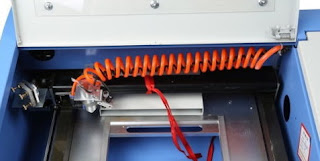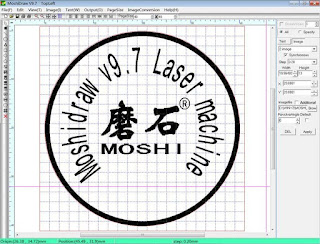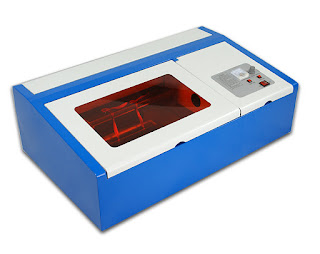
 First thing I noticed when getting it out of the crate was the dent in the side. Although the crate itself looked fine, there was an obvious impact near the bottom on the right hand side. It wasn't too serious but did suggest that the machine had suffered a heavy hit or drop.
First thing I noticed when getting it out of the crate was the dent in the side. Although the crate itself looked fine, there was an obvious impact near the bottom on the right hand side. It wasn't too serious but did suggest that the machine had suffered a heavy hit or drop.
Opening the machine revealed the extractor fan, the water pump and the extractor hose. The hose was a very cheap plastic one and it was crushed at various points. I then found bits of white plastic in the bottom of the machine. These came from the extractor fan. The fan was damaged at the point the cables went in, exposing the wiring.
I decided I could live with this damage so I installed the software an started setting up for a test. I connected the water pipes (which didn't in any way fit the pump supplied) and started pumping water around the laser tube system. I checked the laser tube had filled with water and plugged the whole thing in. I drew a simple circle in the LaserDraw software, dropped a sheet of MDF into the machine and hit "cut". The head moved in a cool little circle but with no laser cutting and a horrible shuddering noise.
I took out the wood and replaced it with paper and tried again. Same thing again. I moved the laser head into the centre of the machine and hit the laser "test" button. There was no hole. So I opened up the back of the machine and placed a piece of paper directly at the end of the laser tube, closed my eyes (I don't have goggles) and hit test for half a second. Nothing. Then for a second. Nothing. Then for 10 seconds! That's when I noticed that the laser tube didn't look right. Inside the tube there is a smaller tube running down the centre. This didn't quite look parallel with the main tube. On closer inspection I noticed a crack in the tube at one end with an obvious piece of glass missing.
I should have given in at this point, but I had the evening spare and I wanted to mess. Next I looked at the juddering. I noticed that the X gantry that holds the laser hear seemed not level. Not only that, the gantry wasn't at 90 degrees with the Y axis. Poking my camera phone in the gaps and taking photo's it was obvious that the top gantry was very un-level and the entire thing was at an angle. The top gantry was easy enough to fix. It just needed the end screws loosening and tightening back up while holding it level.
The skew on the whole thing needed one of the cogs that held the right hand belt loosening so that the right side of the gantry was able to move independently to the left. I moved it till it was parallel with the back of the machine and tightened it back up again.
To test it I taped a marker pen to the laser head and programmed in some shapes and letters. The pen was wobbling all over the place but it seemed to work well. The juddering was greatly reduced, although it still makes noises where it shouldn't.
I emailed the seller about all of the problems and requested a return. I packed it back in its crate and went to bed more than a little pissed off.


